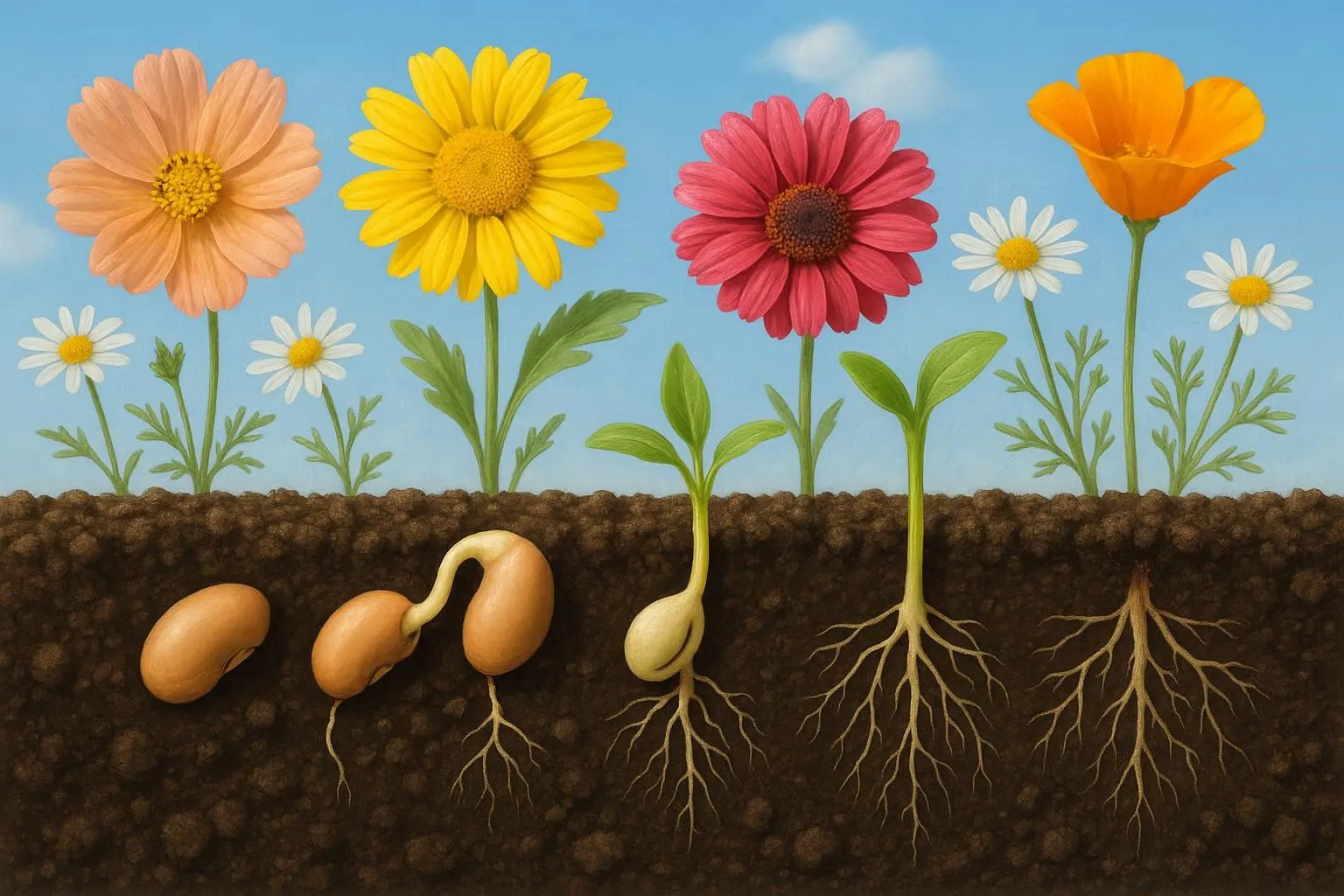Every plant goes through a single procedure called germination to start its journey. This occurrence in nature signifies the development of a seed into a living, developing plant. Ecosystems all throughout the world would suffer if germi nation stopped the cycle of plant life. Anyone who works with plants, from gardeners planting flowers to farmers growing commodities, needs to understand germination. Temperature, moisture, light, and oxygen all have a significant impact on this delicate process, which is essential for reawakening the dormant seed.
What Is Germination?
The process via which a seed becomes a new plant is called germination. An embryo and stored food that supply the energy required for growth are found inside every seed. The seed starts to sprout when the necessary conditions are met, which typically include the proper ratio of oxygen, water, and warmth. When the seed collects water, it swells and bursts open, marking the beginning of germination. Soon after, the shoot that grows upward toward light and the embryonic root, also known as the radicle, emerge to embed the seed into the earth.
The Stages of Germi nation
There are various phases to the germination process. First, a process called imbibition occurs, in which the seed absorbs water. The latent seed begins to undergo metabolic activity as a result. The seed’s internal enzymes then start working, turning the nutrients it has stored into energy. The seed coat rips open in the following stage, enabling the root to show through. The shoot’s penetration of the soil surface, which marks the beginning of photosynthesis, marks the end of the germi nation process. Every stage of germi nation is important since any disruption could cause the growth to stall or even cease.
Factors Affecting Germi nation
A number of environmental conditions must coincide for germination to take place successfully. Because seeds need particular heat levels to activate their enzymes, temperature is crucial. Because it facilitates water absorption and softens the seed coat, moisture is equally important. The respiration mechanism, which supplies energy for cell growth, is fueled by oxygen. Additionally, light affects germi nation; some seeds require full light, while others do better in the shade. Farmers and gardeners can improve circumstances for higher germi nation rates and healthier plants by being aware of these aspects.
Types of Germi nation
Germi nation can be classified as either epigeal or hypogeal. As with sunflowers and beans, the cotyledons (seed leaves) rise above the earth during epigeal germi nation. The cotyledons remain underground during hypogeal germi nation, as seen in maize and peas. The goal of both germi nation processes is the same: to create a healthy seedling. However, the way the young plant uses its stored nutrients varies. These differences in germi nation show how adaptable plants are under various conditions.
The Importance of Germination in Agriculture
The success of crop production in agriculture is determined by germination. To make sure that seeds grow into robust plants that can produce food, farmers depend on high germi nation rates. Financial losses and reduced output might result from poor germi nation. Farmers frequently test seeds for germi nation quality before to sowing in order to improve outcomes. To increase the likelihood that seeds will sprout, they might also apply fertilizers or natural growth boosters. In this sense, germi nation plays a role in the production of food on a worldwide scale both economically and biologically.
Germi nation Experiments and Learning
Researchers and students frequently carry out experiments to investigate germination in various settings. Understanding the effects of temperature, light, and water levels on growth is aided by these experiments. For instance, comparing the germi nation rates of seedlings stored in sunshine with those stored in darkness is a typical classroom assignment. These studies emphasize the significance of environmental balance and advance our understanding of plant biology. Sustainable farming methods can also be guided by the knowledge gathered by researching germination.
Challenges in Seed Germination
Not every seed sprouts successfully. Germination can be hampered by a number of issues, including bad seed quality, incorrect storage, or severe weather. Certain seeds do not germinate until they are exposed to certain triggers, such as fire or freezing temperatures. They are shielded from sprouting under adverse conditions by this dormancy. For farmers who depend on prompt germi nation, it presents challenges as well. This is addressed by employing strategies like as stratification (cold treatment) and scarification (scratching the seed coat) to promote germi nation.
Modern Advances in Germ ination Science
Today, germination is being studied and improved by scientists using technology. Researchers are able to comprehend how various animals react to environmental stress because to advanced imaging and genomic analysis. Additionally, biotechnology contributes to the development of seeds with enhanced germi nation potential and disease resistance. These developments enhance environmental restoration initiatives that depend on the successful germination of native plants in addition to increasing agricultural production.
Conclusion
To sum up, germination is the basis of plant life and the force behind both human agriculture and natural ecosystems. It stands for the amazing capacity of nature to replenish and maintain itself. Humans can rehabilitate degraded lands, grow stronger crops, and preserve ecological equilibrium by comprehending and promoting germi nation. The process of germi nation is still one of life’s most amazing changes, whether it takes place in a lab, a garden, or a farm. It is a representation of rebirth, growth, and resilience.

















Leave a comment